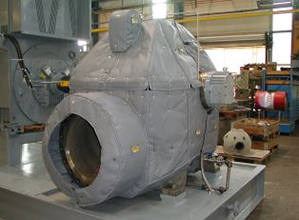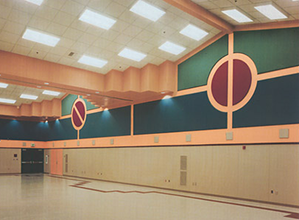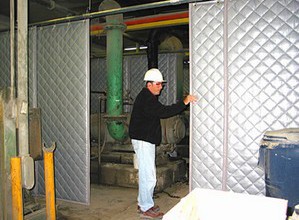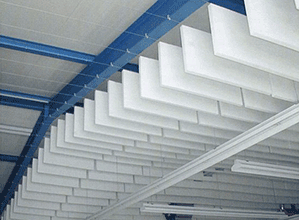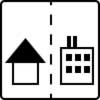Noise Containment
Noise Containment is the process of identifying the sound source and applying engineering controls to treat the noise source and contain the sound emanating from the piece of equipment. Noise or sound containment products are typically a composite material made up of a mass layer and an absorber layer. Mass, or weight, blocks noise from traveling from one area to another. Light, porous, open celled materials are excellent acoustical absorbers which turn sound energy into heat energy, thus preventing the sound from being reflected back. Good sound containment uses both of these materials in conjunction to reduce the sound levels in an area and block the noise from escaping.
Example: You are operating your lawnmower in the field (free space). The lawnmower is loud and is operating at a certain sound level. Next, you push the lawnmower into your garage. The sound levels now appear higher. This is because the sound is not just originating from the noise source itself, the sound waves are also being reflected back from hard flat surfaces in the garage – the floor, walls, and ceiling. To fully contain the noise, you will need to construct an acoustical enclosure made from products that have mass or weight and surround the equipment for noise containment. Then you will need to line the inside of the sound enclosure with an acoustical absorber to reduce the reverberation of the sound. The sound absorber will reduce the noise levels within the acoustic enclosure, thus increasing the effectiveness of the sound containment barrier, and resulting in higher sound level reduction.
Sound blocking, sound absorption, noise suppression, sound mitigation, and sound attenuation are a few of the terms typically used when discussing noise containment. Additionally, sound blankets, sound curtains, and STC rated doors are a few of the products used to contain noise. Whether your sound containment application is a blower, process fan, compressor or vacuum pump that is causing complaints from your neighbors, or a noisy industrial process or machinery that is putting your plant or work area over the OSHA sound level limit, eNoise Control can design and engineer the acoustical solution to meet your goals, budget, and process needs.
Call or e-mail eNoise Control today to discuss your noise control project.
